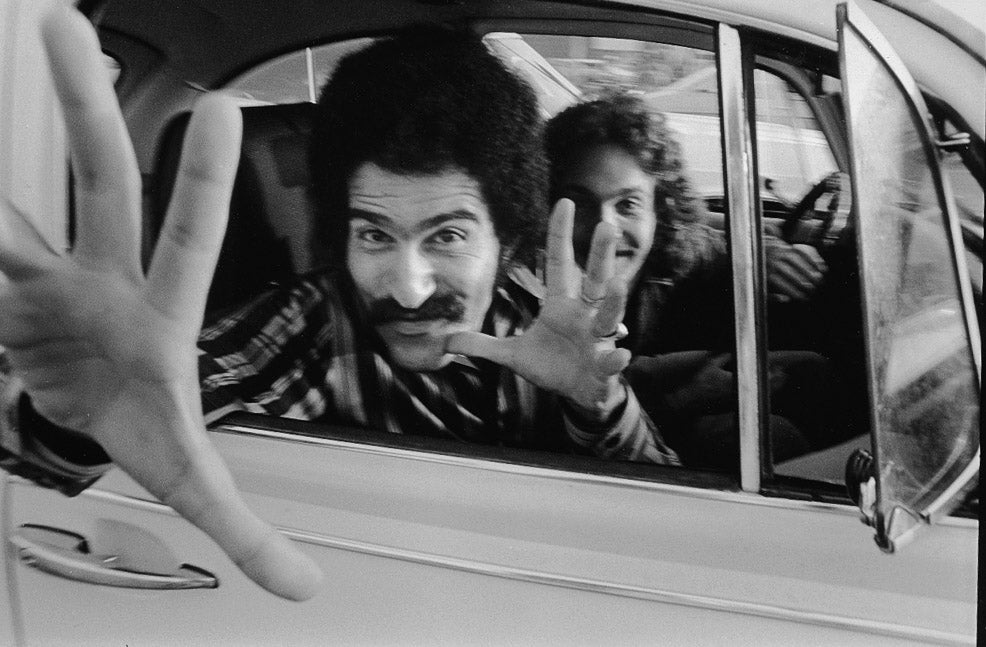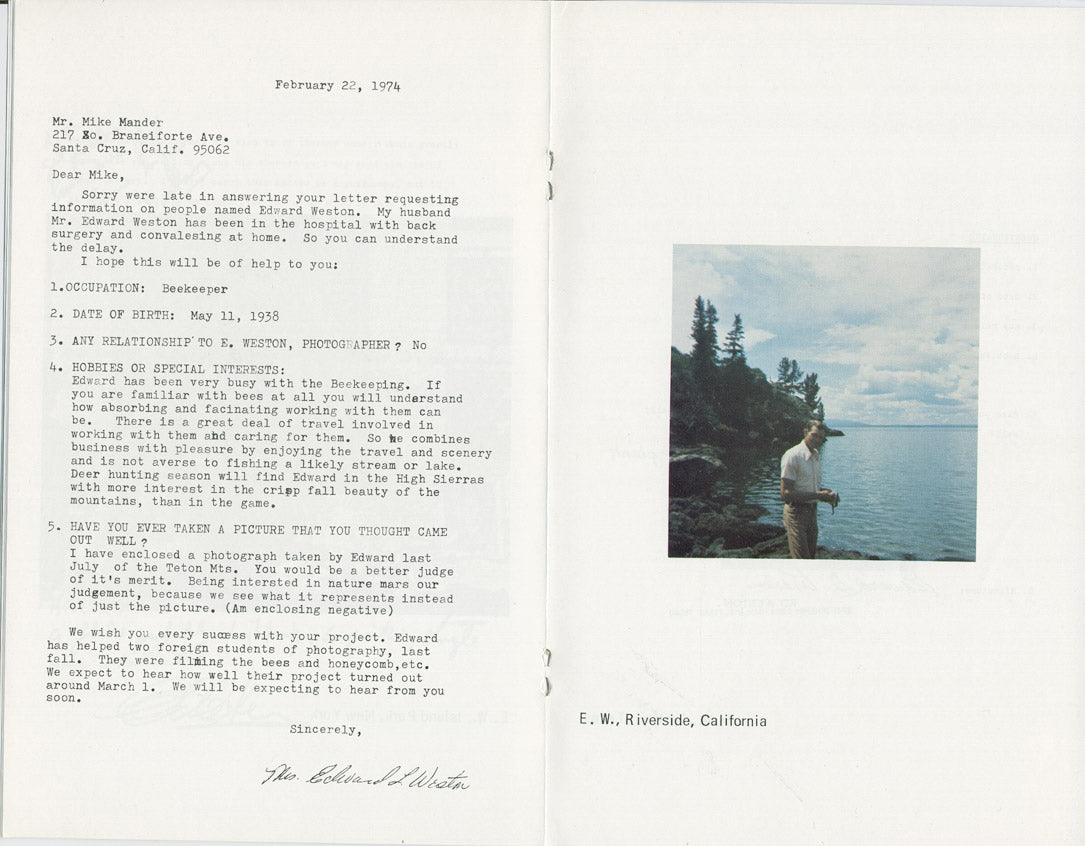Los Angeles born Mike Mandel produced some of the most irreverent and interesting photography and conceptual art of the 1970s. A graduate of the San Francisco Art Institute, Mandel had released two of his most significant works by the time he was 21 years old, influenced by greats such as Evans, Duchamp, and Friedlander as well as his LA contemporary Ed Ruscha.
For People in Cars (1970), he took a wide-angle lens camera to a street corner near his home in Hollywood and photographed people making right-hand turns, capturing images of drivers and passengers in the front and back seats. “I liked the idea that I would stand in one place every day and the pictures could come to me,” he says.

At a time long before smartphones and heavy surveillance, people seem more relaxed about a stranger on a street taking photos. Some waved, some hid, no one wore a seatbelt and everyone smoked. “I was using a wide-angle lens and had to get in really close because I wanted a reaction. Some guys flipped me the finger, but more often people would just smile back or pull a face. They just thought it was kind of funny.”

For his next project, Myself: Timed Exposures (1971) Mandel attached his 35mm camera to a tripod and walked around in public spaces looking for situations to insert himself and create a picture. “Once I found a likely opportunity I would set up the camera, release the self-timer on the shutter, and walk into the frame. The mechanical timer would noisily unwind for ten full seconds, allowing the world to change its complexion in front of my static lens.

People, strangers to me, would be jarred for a moment from their routine and their perceived public isolation. I was standing uncomfortably close next to them, an abandoned camera buzzing a few feet away. I might say something or nothing at all. And suddenly, ‘click’, the machine had made its own decisive moment and only the film would know what latent treasure it owned.”

With tongue firmly in cheek, he followed in 1974 with The Seven Never Before Published Portraits of Edward Weston, a collection of mailed responses to a letter and questionnaire sent out to thirty-five people throughout the United States named Edward Weston, and Mrs. Kilpatric, a collection of around 50 photos of a neighbor in Santa Cruz posing for random snaps on the front lawn whenever he passed her house.

1975 saw the release of Mandel’s best-known solo work Baseball Photographer Trading Cards, 135 cards originally sold in randomly sorted packs of ten to museums and galleries all over the United States. The project satirized the phenomenon of the fine art photography community being consumed by the larger art world and commercial culture.
“I photographed photographers as if they were baseball players and produced a set of cards that were packaged in random groups of ten, with bubble gum, so that the only way of collecting a complete set was to make a trade. I traveled around the United States visiting about 150 photographic personalities and had them pose for me. I carried baseball paraphernalia: caps, gloves, balls, a mask and chest protector, a bat, as well as photographic equipment, and made a 14,000-mile odyssey. Out of this experience came 134 Baseball-Photographer images. I designed a reverse side for the card which would allow for each photographer to fill in their own personal data that in a way referred to the information usually included on real baseball cards: Favorite camera, favorite developer, favorite film, height, weight, etc. I used whatever information each photographer provided me. In a sense, each of their responses provides an insight into how they each approached participation.”

The project received press coverage in Newsweek, Sports Illustrated, Associated Press, San Francisco Chronicle, and all the major print media. Ironic as the project was intended to satirize the media’s impacts on fine art photography.
Mandel is also known for his work with the late Larry Sultan. After meeting at college, they went on to work together for the next 30 years, collaborating on Billboards, a series of 15 different subvertizing billboards displayed throughout California and elsewhere in the USA between 1973 and 1990; as well as various conceptual books. Evidence (1977), a book of photographs sourced from scientific, industrial, police, military and other archives” made huge waves within the art photography world. Liz Jobey wrote in the Financial Times that it "is recognized as one of the signal works of contemporary photography". Randy Kennedy wrote in The New York Times that it "became a watershed in the history of art photography"; and in 2016, Source named it the second greatest photobook of all time (second only to Robert Frank's The Americans).

Since the 1970s, Mike Mandel has been deeply engaged with photography, using its changing tools to pursue projects that question the nature and uses of a medium too often taken at face value. But the bigger appeal is that, for the most part, his work is fun. Perhaps down to the fact that he is a Southern California native, and not able to take himself too seriously. It might also be his quasi-hippie ethos, an aversion to self-seriousness. Whatever the case, Mandel manages both honesty and levity, a sometimes rare feat in the art world.
Mike Mandel on Flickr.









